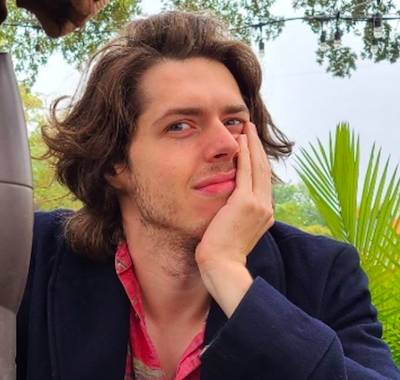“Tetris” Director Jon S. Baird on Putting the Pieces Together
The origin story of Tetris is even more exciting than the iconic game itself. The game’s creator, Alexey Pajitnov (Nikita Efremov), and its greatest champion, businessman Hank Rogers (Taron Egerton), fought to get the game out from under the thumb of Soviet Russia and out into the world. The true story is complicated, but in the hands of filmmaker Jon S. Baird, it’s gracefully told in his latest film, Tetris.
Baird is no stranger to true stories about dreamers. Previously, he directed the charming Stan & Ollie about the iconic comedy duo. Once again, Baird brings ease to the storytelling with his latest picture, fitting all the pieces together with a Tetris master’s precision. Baird takes us behind the scenes of his cold war thriller and explains how his team turned Scotland into Soviet Russia and Japan, utilizing Tetris’s 8-bit origins in the film’s look and feel, and more.
You fit so much information about gaming and these characters into the first 15 minutes. How’d you find the right flow for that intro?
That was the most difficult part of the whole film, and the script went through so many iterations of that intro. The script wasn’t as fast-paced as that at all. The director’s cut version was a bit more sped up, but the finished version was definitely more brutal in terms of getting to the point. After the first 15 minutes, the film played as it was, when he goes to London and goes to get the rights. It flows pretty well after that. With the setup of the characters, Alex, and the game, there was so much back and forth. It was trial and error and testing the movie. It was a fun game to get to that point.
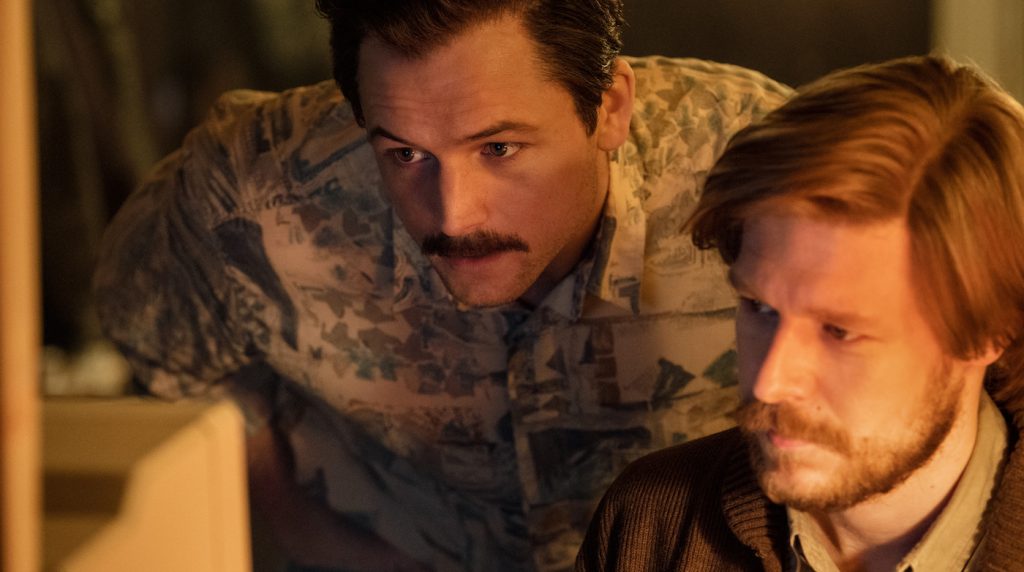
Did you also see the structure of the film as a video game?
Probably subconsciously, yeah. Hank’s story is like a video game. You have this guy who’s a ball of energy and a bit naive, but he doesn’t have any real fear. Whether that fearlessness comes from courage or naivety, who knows? He does feel like a video game character, I suppose. The pure fact he goes to put himself in this ridiculous situation in Moscow at that point in time? That’s a very dangerous situation. I’ve never thought about it like a video game, but it’s a good point.
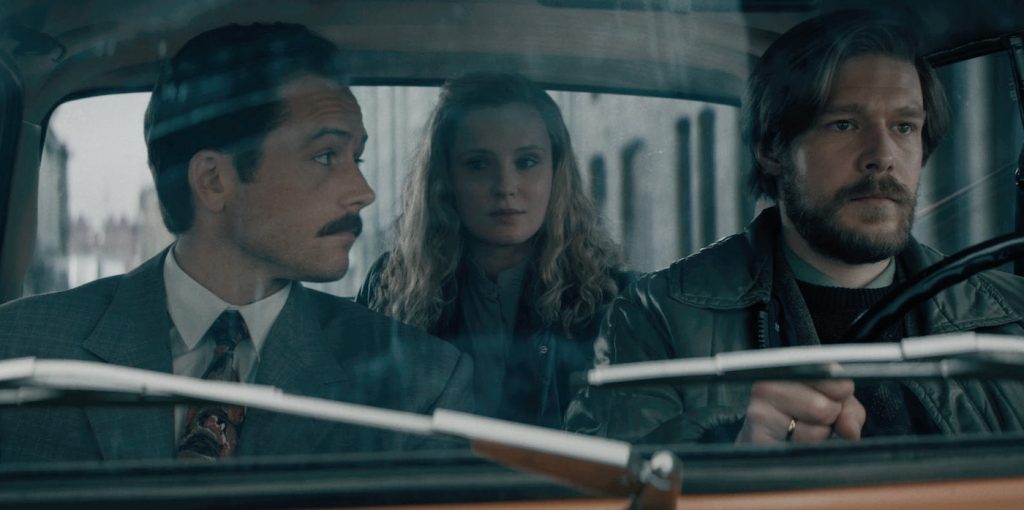
How were your conversations with Hank? Have all the years since changed his perception of that time in his life?
Noah [Pink], the screenwriter, had had a lot of conversations with him when we were doing research. I probably had minimal conversations with him when fine-tuning the script and finer details until Taron was involved. We got them together in a Zoom in the middle of the pandemic. I’ve spent more time with Hank since then and, particularly [President & Ceo of Tetris] Maya, his daughter. My family was on vacation in Hawaii, where they lived last summer, so we got to know them quite well. I think Hank is not your typical computer nerd. He’s definitely a geek of some sort, but he’s more of a hippie or a maverick businessman. That’s why when we were dressing him, Taron had the idea for his tie, which is not a tie that you would wear as a corporate guy. It was more flamboyant. Hank is in his sixties now. I think when you get to a certain age, you do look back and go, wow, I was a bit wild then. I don’t think he would change anything. I think he would probably still go to Moscow now if you asked him to try and hunt down again. He’s that kind of guy. He is very much still that maverick.
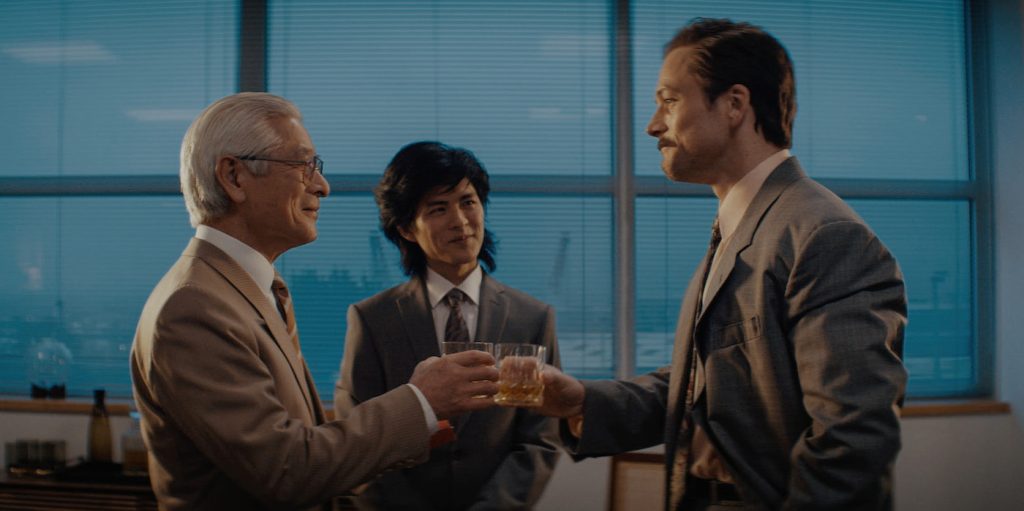
What were the notes like from Tetris? Were there details that were crucial to them in depicting the game?
I think we were good with the Tetris company because they provided us with a lot of the older versions and stuff that we could use as references. Whenever there was code on the screen, Alexey helped us there. He didn’t give us the exact code for the original Tetris, but he gave us something that would’ve been possible or believable. I mean, I don’t understand code in the slightest. My brain isn’t tuned up like that. The company and Alexey were helpful in making sure that we were steered in the right direction. It was never, never a thing we were worried about. We worried about how authentic the Russian characters were, you know? Also, the car chases or the clothing in Russia or Japan. All of that was more worrying than the actual computer game itself. We were in good hands there.
The eight-bit graphics for the exteriors and even the final car chase are clever choices. How’d you arrive at that decision?
Since we had to shoot the whole film in Scotland, we couldn’t get the exteriors over in some of those other locations. We knew we were gonna use some of the eight-bit graphics as well. It was almost like, okay, level one, level two, and you see the players and stuff, you know, the eight-bit graphics. Then we thought, well, we could use this for the exteriors and the establishing shots. It was an organic process. It happened in post-production.
There’s no live-action footage in that final chase, right?
The whole car chase was CGI, the whole thing.
When it came to portraying Russian culture accurately, how’d the actors help you there?
Well, the Russian actors we hired are five of the best theater actors in Russia. We were lucky we had a great regional Russian casting director, who got us five actors who were not slow in telling us if something was wrong. They’re blunt, and I love them for that. Whether it was costume, props, or locations, they were very good at helping us. I involved them early on with some dialogue as well. They rewrote the Russian we had written. I was never worried about them, and the same with the Japanese actors as well. We flew actors in from Moscow and St. Petersburg, and we flew the Japanese actors in from Tokyo. We were even hiring background artists who were native Russian speakers in Scotland, and some of them had never acted before. We were getting a lot of them from Facebook. It was more important to have a native Russian speaker who hadn’t acted rather than an actor putting on an accent, which I just can’t abide.
What about recreating that time in Moscow was challenging? What were some of the hurdles you and your production designer faced?
I’ve known the production designer, Daniel [Taylor], for 23 years. We were PAs together on our first job. We came up through the ranks. He did my first short film and did my first feature film, and then we went our separate ways to get more experience. And then when the time was right, when he had enough experience, and I had enough experience to do something with a bigger budget, we got back together again. Now, we’re here. I’m very proud of Daniel. He did such a good job that the production company, Marv Studios, took him onto [director Matthew Vaughn’s] Argyle. He was our most valuable player. Daniel and the set dresser, as well, were doing it in the middle of the pandemic up in Scotland. They were trying to create Eastern Europe, the middle of the Soviet Union, Japan, Seattle, and London in the middle of Scotland. It’s not an easy thing to do. The film is a better film because of them.
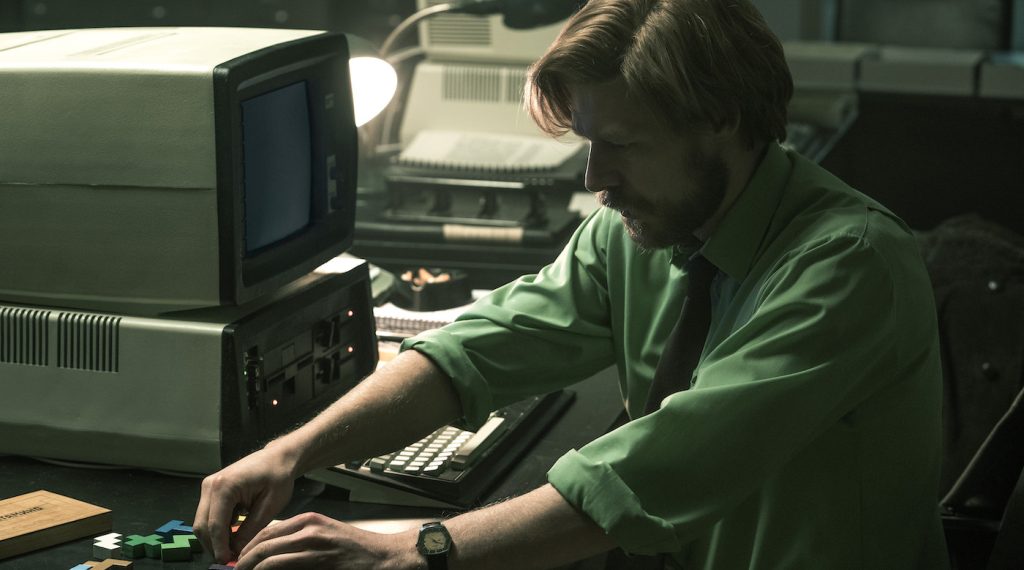
As a filmmaker, how valuable was your experience as a PA?
I think everybody should be a PA. It gives you a massive understanding of what it’s like to start at the bottom, a discipline, and an understanding of how hard it is to actually get to that position of directing or whichever department. On the first job I had, on the first day as a PA, I was sent around the boss’ house to pick up this infestation of maggots on the kitchen floor and take them down to environmental health to get them checked out. I was delighted to do it because I come from a fishing town in the north of Scotland where there are no film jobs. Working in the movies or working in television is a complete dream there, you know? So when I moved to London, I didn’t have any connection with this industry, and I had to start at the bottom. I just knew this was the right thing for me. Whatever it took, I would do it. PA work separates the people who are in it for the right reasons from the people who just think it’s a glamorous life.
Tetris is streaming now on Apple TV+.
For more stories on Apple TV series and films, check these out:
Martin Scorsese’s “Killers of the Flower Moon” Will Premiere at Cannes
“Shrinking” Production Designer Cabot McMullen on Laughing & Crying in Pasadena
Martin Scorsese’s “Killers of the Flower Moon” Gets Fall Release From Apple
Featured image: Taron Egerton in “Tetris.” Courtesy Apple TV+


